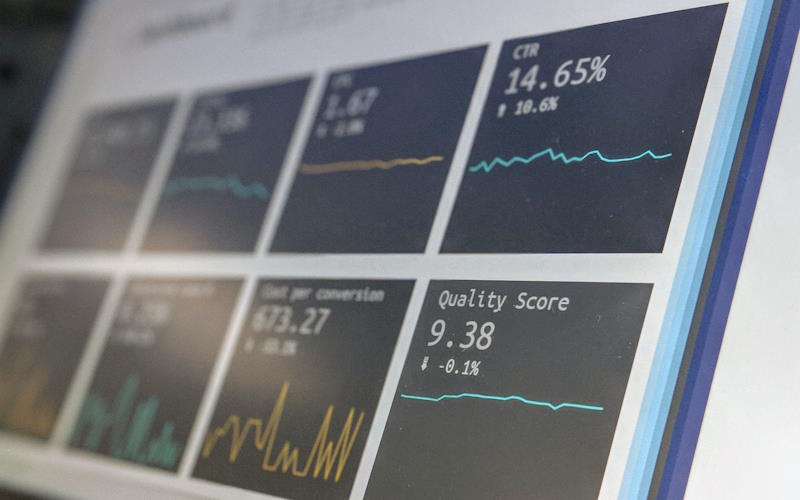Revolutionize Your Sales Process: A Comprehensive Guide to Sales Automation

It’s not a secret that traditional methods of sales are rapidly becoming obsolete, and new ones enter the picture—sales automation. This transformative approach is not just a buzzword; it’s a strategic imperative for businesses aiming to scale, optimize, and stay ahead of the curve.
The modernization of the sales process is no longer a luxury but a necessity. With the advent of AI, machine learning, and data analytics, the sales industry is undergoing a seismic shift, offering unprecedented efficiencies and capabilities. As a matter of fact, 60% of sales professionals say that AI/automation tools are important to their overall sales strategy. Ignoring this evolution is akin to leaving money on the table; it’s a missed opportunity for growth, scalability, and data-driven decision-making.
This article aims to serve as your comprehensive guide to understanding and implementing sales automation in your organization. From dissecting the traditional sales process and contrasting it with its automated counterpart to providing actionable insights on choosing the right tools and measuring ROI, we cover it all.
Understanding the Sales Process
Before we leap into the future, it’s crucial to understand the roots. The traditional sales process, often manual and time-consuming, has its merits but is increasingly becoming a relic in the face of technological advancements.
The metamorphosis from traditional to automated sales isn’t just a trend; it’s a revolution. Automation brings scalability, efficiency, and data-driven strategies to the table, transforming how we think about sales from the ground up.
Choosing The Right Tools For The Right Platforms
It is a well-known fact how powerful a sales tool LinkedIn could be. The platform has evolved from a networking space to a robust tool for automated lead generation, prospecting, and sales conversion, thanks to third-party automation tools. These tools offer features like custom variables for personalization and campaign analytics dashboards, effectively turning LinkedIn into a sales powerhouse.
What’s more, the best automation tools for LinkedIn, allow you to overcome the weekly invitation limit, enabling you to send up to 700 invitations per week and thereby expanding your reach exponentially.
And it doesn’t stop there; the tool also provides a suite of advanced features, from finding unavailable emails to auto-invite and auto-follow strategies, that can increase your conversion rates by up to 18%.
Another great solution you can leverage is email automation tools. Gone are the days of manually sending out emails to your prospects. Modern email automation tools empower you to segment your audience, personalize messaging, and even automate follow-ups, freeing you to focus on more strategic tasks.
As we delve deeper into the technological advancements shaping sales automation, we encounter artificial intelligence and machine learning. These are the engines that power predictive analytics, chatbots, and a host of other tools that make your sales process smarter, more efficient, and ultimately more profitable.
Naturally, CRM systems also play a pivotal role by centralizing all your lead data and contact information in one accessible hub. The most advanced systems enable you to engage with your clients swiftly, often in a matter of seconds, streamlining communication and enhancing responsiveness.

Automating the Sales Pitch: The Art of Virtual Engagement
In the digital age, the sales pitch has transcended the conference room. Virtual demos and webinars have become the new frontier for engaging prospects, offering the dual benefits of scalability and personalization.
But the real magic happens when these are coupled with automated follow-ups and nurturing sequences. Imagine concluding a webinar and having a tailored email sequence triggered automatically, nurturing leads down the sales funnel without lifting a finger. It’s not just efficient; it’s transformative.
Overcoming Challenges and Ethical Considerations: The Human Element
Automation is powerful, but it’s not without its challenges. Handling objections in an automated world requires a blend of pre-emptive measures and real-time adjustments. It’s about crafting an automation strategy that’s flexible enough to pivot when faced with unexpected roadblocks, but also robust enough to handle common objections autonomously. And let’s not forget the irreplaceable value of human intervention. Sometimes, a personal touch is what turns a ‘maybe’ into a ‘yes.‘
Ethical Aspects: Navigating the Moral Compass
As we venture deeper into the realm of sales automation, ethical considerations like data privacy and compliance become increasingly significant. Transparency is also important. Your prospects and customers have the right to know how their data is being used, and your automation tools must comply with regulations like GDPR.
Authenticity, too, is non-negotiable. Automated doesn’t mean robotic; your brand’s voice must resonate in every automated email, chat, and social media post.
Measuring Success and ROI: The Numbers Game
What gets measured gets managed. Key performance indicators (KPIs) serve as the North Star guiding your sales automation efforts. From conversion rates to customer lifetime value (CLV), these metrics offer a quantifiable measure of success. But remember, ROI isn’t just about revenue; it’s also about time saved, efficiencies gained, and relationships nurtured.
Continuous Improvement: The Cycle of Excellence
The world of sales automation is ever-evolving, and standing still is not an option. A/B testing allows you to fine-tune your strategies, while feedback loops provide invaluable insights straight from the horse’s mouth.
It’s a cycle of testing, learning, implementing, and repeating, keeping your sales automation strategy not just current but cutting-edge.
Conclusion
As we look to the future, one thing is clear—sales automation is not a trend, it’s a paradigm shift. From AI-driven predictive analytics to blockchain-based contract management, the future holds untold possibilities. But whatever the trends, the core principles remain—efficiency, scalability, and a relentless focus on the customer.
Images Courtesy: Unsplash.com

